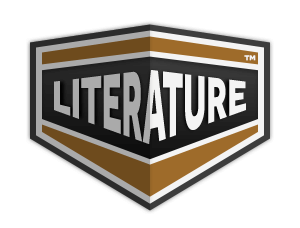The natives of British Central Africa
- 47 Downloads
Cataracts—the usual terminus is Katunga’s, about twelve miles below them. In the dry season they cannot always come within sight of Chiromo, and, during the great drought of 1903, the natives of that place were hoeing their maize-gardens far out in the channel of the river. The salt Lake Chilwa, east of the Shiré, disappeared almost, if not quite, at that time, but reappeared with subsequent rains. It is thought, however, that there is a continuous fall in the level of Nyasa, which is unaffected by the rise and fall of successive seasons. In some places a series of old beaches can be traced, ascending like terraces from the lake-shore to the foot-hills. This fall is attributed to several causes—the wearing away of the outlet channel, allowing more water to escape; the disappearance of the forests and consequent diminution of the rainfall; and the raising of the ground by volcanic action. There are not now any active volcanoes in the country, but earthquakes are common in the neighbourhood of the lake, and there are hot springs near Kotakota, and also on Mount Morambala (Lower Shiré). Mlanje Mountain is of volcanic origin; in the German territory, north of Nyasa, there are numerous extinct volcanoes and crater-lakes. The district called the Shiré Highlands proper is enclosed between the Shiré, the Ruo, and Lake Chilwa. It was so named by Livingstone, and others besides him have noticed the similarity to the Scottish mountains, in these rugged peaks and crags of quartzite and grey granite, especially in the dry season, when the brown grass is very nearly the colour of the dead heather and bracken. Sochi, near Blantyre, is, in general outline, not unlike Ben Cruachan. The highest of these mountains are Mlanje and Zomba—they are ranges rather than mountains; or, more precisely still, Mlanje is an isolated mass, a plateau with peaks rising from it like buttresses—the highest point 9680 feet. The plateau has a height of 6000 feet, and a temperate climate—cool enough for hoar-frost at night. From these mountains the land sinks in a series of irregular undulations, to the Shiré, covered sometimes with bush, sometimes with the thick, coarse grass so feelingly described by all travellers, which is really more like canes. After it is burned, as it is every year, it is a greater nuisance than ever, for the larger stalks (about as thick as one’s finger) never get quite consumed, and neither stand up nor lie flat, but lie across each other at every conceivable angle—too high to step on and too low to push one’s way under. Other mountains are Chiperone, Chiradzulo and Tyolo, Nyambadwe and Ndirande—the two latter close to Blantyre. It is difficult to make out their relation to each other. At a bird’s-eye view—as from the top of Nyambadwe, or some point on Ndirande—they look like a confused sea of peaks and ridges; but they are more or less continuous to Zomba, and are separated from Mlanje by
Translation
Translate and read this book in other languages:
Select another language:
- - Select -
- 简体中文 (Chinese - Simplified)
- 繁體中文 (Chinese - Traditional)
- Español (Spanish)
- Esperanto (Esperanto)
- 日本語 (Japanese)
- Português (Portuguese)
- Deutsch (German)
- العربية (Arabic)
- Français (French)
- Русский (Russian)
- ಕನ್ನಡ (Kannada)
- 한국어 (Korean)
- עברית (Hebrew)
- Gaeilge (Irish)
- Українська (Ukrainian)
- اردو (Urdu)
- Magyar (Hungarian)
- मानक हिन्दी (Hindi)
- Indonesia (Indonesian)
- Italiano (Italian)
- தமிழ் (Tamil)
- Türkçe (Turkish)
- తెలుగు (Telugu)
- ภาษาไทย (Thai)
- Tiếng Việt (Vietnamese)
- Čeština (Czech)
- Polski (Polish)
- Bahasa Indonesia (Indonesian)
- Românește (Romanian)
- Nederlands (Dutch)
- Ελληνικά (Greek)
- Latinum (Latin)
- Svenska (Swedish)
- Dansk (Danish)
- Suomi (Finnish)
- فارسی (Persian)
- ייִדיש (Yiddish)
- հայերեն (Armenian)
- Norsk (Norwegian)
- English (English)
Citation
Use the citation below to add this book to your bibliography:
Style:MLAChicagoAPA
"The natives of British Central Africa Books." Literature.com. STANDS4 LLC, 2024. Web. 22 Oct. 2024. <https://www.literature.com/book/the_natives_of_british_central_africa_71018>.

